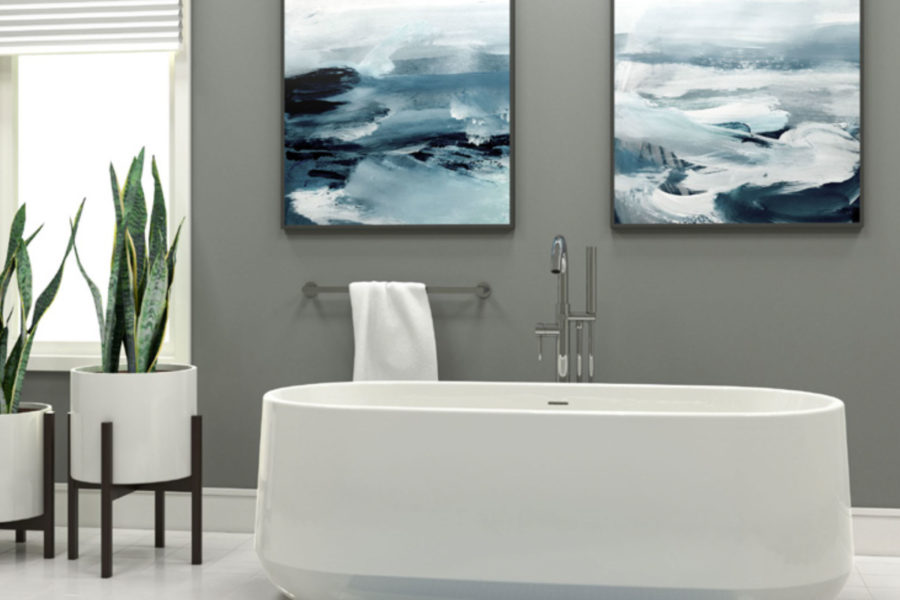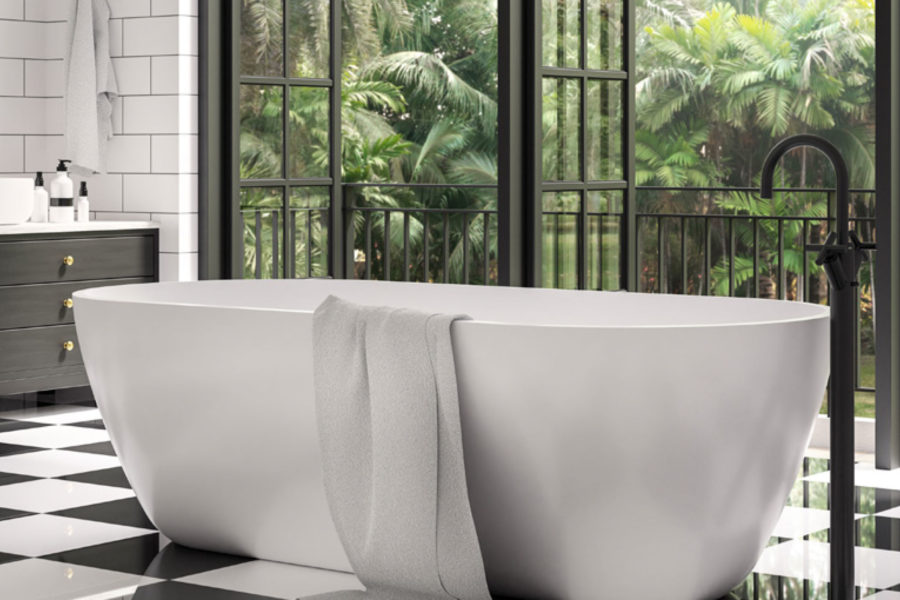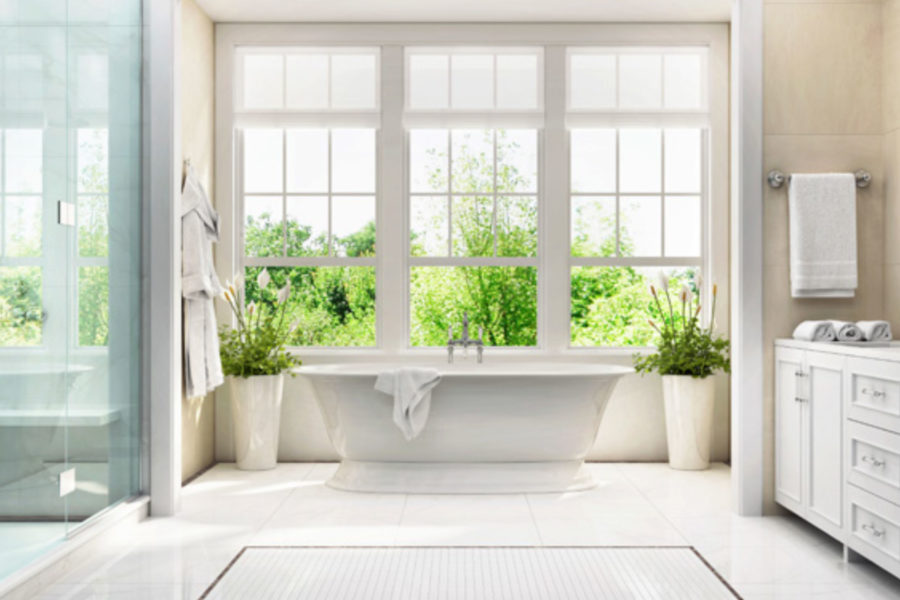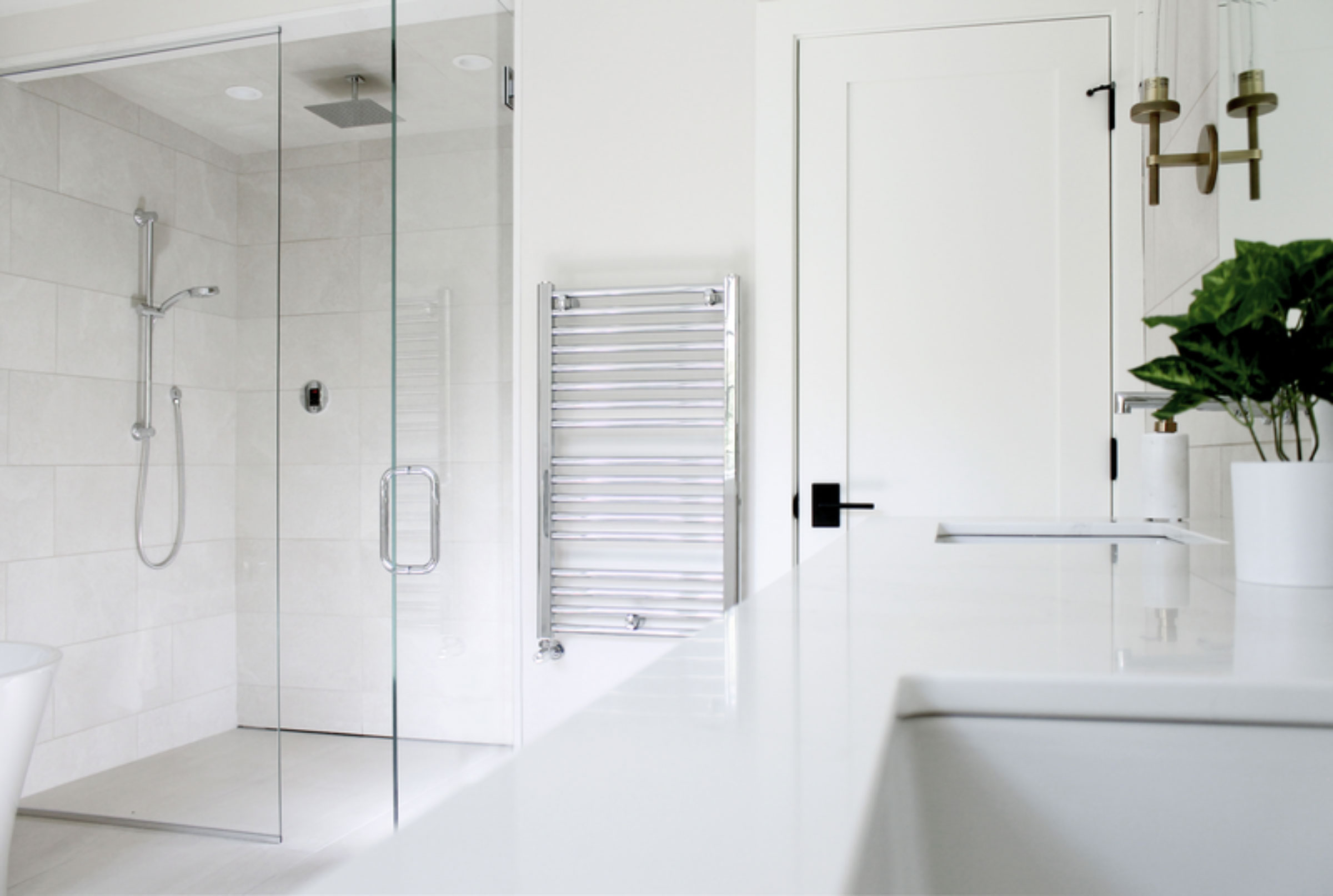Bathrooms and kitchens are without a doubt a necessity. Unfortunately, they are also some of the most water- and energy-consuming facilities in a commercial building.
Building owners can cut back on water and energy costs by making green updates to their fixtures. And by going green, they also have the opportunity to earn LEED points.
It’s no surprise that ownership groups are interested in applying for LEED certification. But what is LEED certification, and how can project teams help building owners earn LEED points?
Let’s discuss LEED certification and the plumbing products that earn LEED points.
What is a LEED certification?

Photo courtesy of Oatey Co.
LEED is a green building rating system developed by the nonprofit USGBC. It includes a set of rating systems for the design, construction, operation, and maintenance of green buildings, homes, and neighborhoods.
LEED aims to help building owners and operators be environmentally responsible and use resources efficiently. Supporting building owners in making a building LEED-compliant is a great way to gain a competitive edge and help them reap the economic and health benefits.
A common misconception is that products or services can be LEED-certified, however, the USGBC does not award credits based on the use of particular products. Rather, points are earned by meeting the performance standards outlined in its rating systems. That means it’s up to project teams to determine which products are most appropriate for credit achievement and program requirements. The number of points a project earns determines the level of LEED certification.
Levels of LEED certifications include:
- LEED Certified: 40-49 points earned
- LEED Silver: 50-59 points earned
- LEED Gold: 60-79 points earned
- LEED Platinum: 80+ points earned
Let’s take a look at some of the LEED credits your project can earn and examples of plumbing products that could help building owners and operators earn LEED points. For more information, you can take a look at the LEED scorecard.
Water Efficiency

Photo courtesy of Oatey Co.
The water efficiency category includes credits like outdoor and indoor water use reduction, building-level water metering, and more. To earn points in this category, consider installing faucet aerators.
A faucet aerator is a screen at the end of a faucet that reduces the amount of water coming out while creating a consistent flow. Some aerators have lower flow rates. New and more efficient, WaterSense-labeled faucets and aerators can save many gallons of water per year.
Installing water-saving showerheads is another great way to save water. Standard showerheads use 2.5 gallons of water per minute (GPM), while water-saving showerheads that earn the WaterSense label use no more than 2.0 GPM, according to the EPA. In California, the standard is stricter yet, at 1.8 GPM.
Another great option is low-flush-volume toilets that use significantly less water than conventional models. The current federal standard is 1.6 gallons per flush (GPF). However, recent advancements have allowed toilets to use only 1.28 gallons per flush or less while still providing equal or superior performance.
A dual-flush toilet uses two buttons or a handle mechanism to flush different amounts of water. A lesser amount of water is designed to flush liquid waste and a larger volume for solid waste.
Energy and Atmosphere

Photo courtesy of Oatey Co.
The energy and atmosphere category includes credits for minimum energy performance, building-level energy metering, and more.
HVAC systems can play a powerful role in reducing the environmental harms of excessive energy use. Eco-friendly water heaters will reduce a building’s emissions, enhance energy efficiency, and reduce gas or electricity bills. Energy-efficient, tankless water heaters—also known as on-demand water heaters—use less energy than standard water heaters. That is mainly because high-efficiency water heaters heat water only on demand, while conventional storage-tank models operate day and night to keep the stored water hot.
Another possible, eco-friendly aspect of high-efficiency water heaters is less water waste. Recirculating-type tankless water heaters deliver hot water with virtually no wait time, reducing the amount of unused cold water going down the drain.
Materials and Resources

The QuickDrain shower pan system made from recycled water bottles can make an installation eligible for LEED certification points. Photo courtesy of Oatey Co.
The materials and resources category includes credits such as building life-cycle impact reduction, sourcing of raw materials, and more. These credits are intended to encourage adaptive reuse as well as the use of products and materials verified to have been extracted or sourced responsibly. Certain materials and resources help achieve certification because of their low impact on the environment and because they help improve indoor air quality.
Some examples of sustainable building materials include bamboo flooring, reclaimed wood, porcelain, and PET (polyethylene terephthalate). These are materials that can last a long time.
For example, the QuickDrain complete shower solution is an eco-friendly option. To date, more than 19 million plastic bottles have been repurposed by the manufacturer into thousands of pre-sloped and tile-ready shower pan systems. Made of extruded rigid PET plastic foam, the lightweight and shatterproof shower pans and panels are constructed from 100% post-consumer plastic water bottles.
The use of certain paints, coatings, sealants, and adhesives can also help a building earn LEED certification points. Use low and no-VOC products for all paints, sealants, and caulks to improve and maintain indoor air quality.
Oatey LO-VOC X-15™ PVC Bonding Adhesive provides a permanent, watertight seal when joining flexible PVC membrane sheets together. The adhesive is ideal for use in tile showers and other concealed water-proofing applications, adhering shower pan liner seams together and dam corners over the shower curb.
The categories shared above are only three examples included in the LEED Certification Score Card, check out USGBC to learn about other ways to earn LEED points.
In Summary
Buildings that meet or exceed LEED requirements cost less to maintain and produce less waste. Additionally, some US federal agencies, state, and local governments require or reward LEED certification. Rewards can include tax credits, zoning allowances, reduced fees, and expedited permitting.
Project teams can support owners and operators in this endeavor by identifying and specifying plumbing products that will make an installation eligible for LEED certification points.


